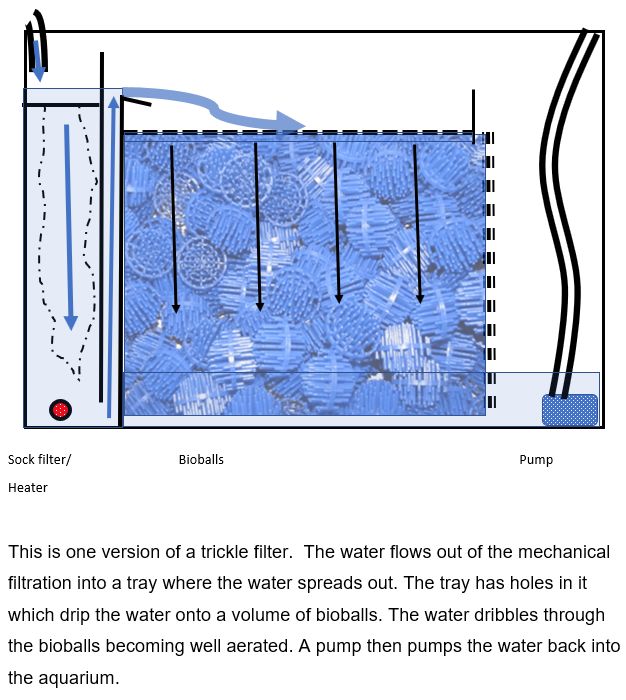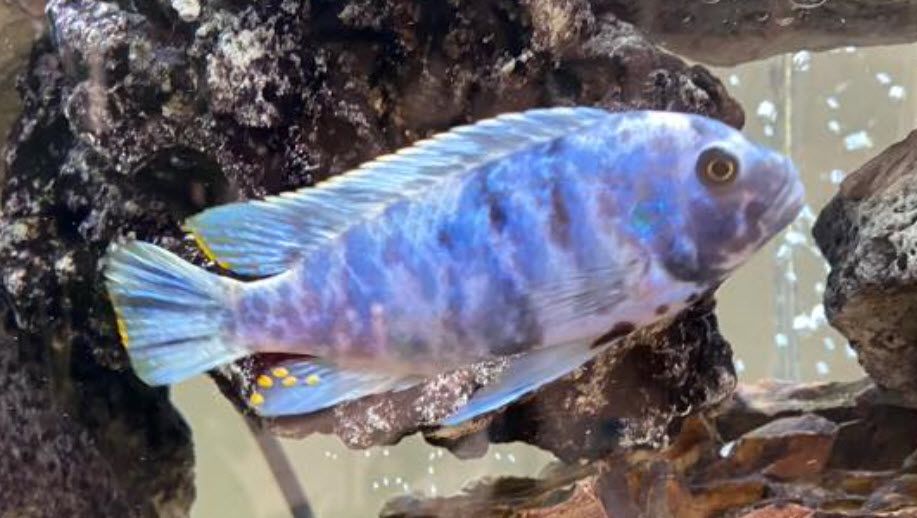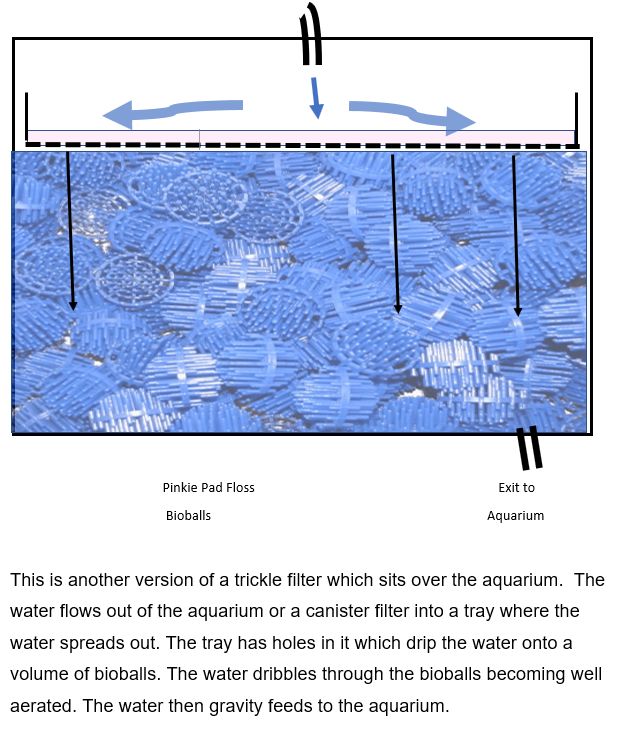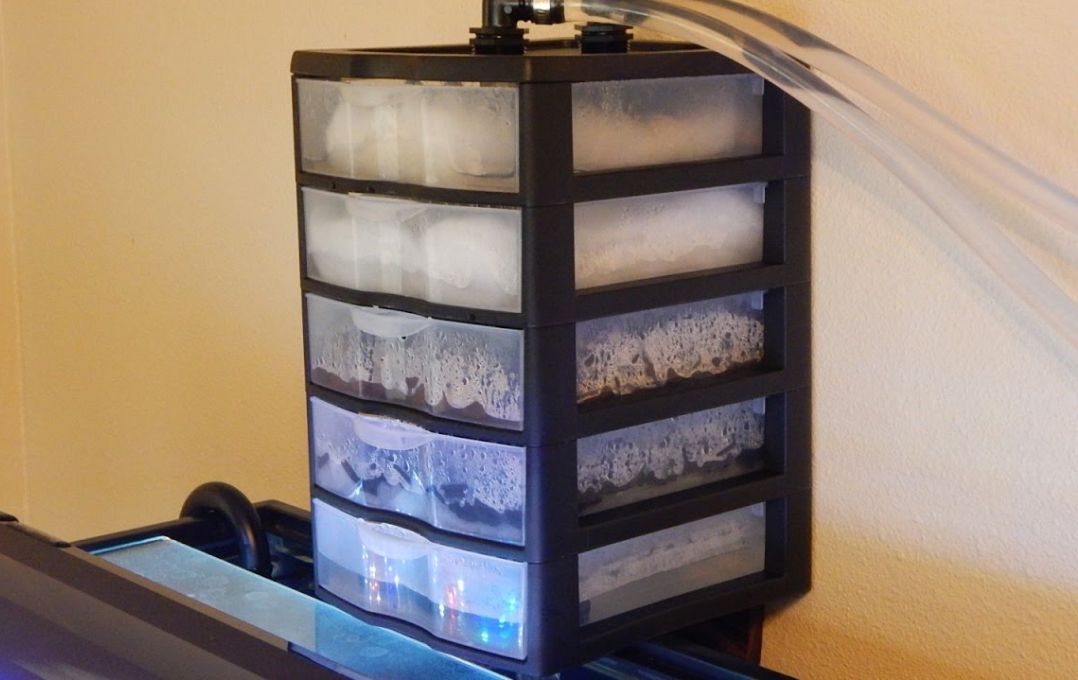One type of sump filter is called a trickle filter. In a trickle filter the water flows into a tray with many small holes in it. The tray spreads the water out over a square foot or so of surface. This tray is over what typically is several gallons of some sort of bioballs which are in air. The water “trickles” down through the media, thus the name.
The surface area of fast-moving water/air interface in a trickle filter with one cubic foot of bioballs will be roughly fifty square feet, or ten times the surface area of a typical 100-gallon aquarium. This explains the excellent aeration of a trickle filter.
But the fast-moving water doesn’t hit all the surfaces of the media in the trickle filter. It is a pretty hit or miss proposition. And the only really effective media for trickle filters is bioballs. Bioballs are not very good media. So, a trickle filter is only very roughly 50% as efficient at doing ammonia oxidation or creating crystal clear water as a static submerged bed filter that uses bioballs. It is only roughly 8% as efficient as a canister filled with foam. And a trickle filter is only about 3% as efficient as a fluidized K1 media sump. Trickle filters are just not a very good filter option and are rarely seen in the hobby today.

A trickle filter does a great job of aeration, but it does a poor job of biofiltration. It is difficult to permanently adjust the drip tray without getting an overflow of the tray. One has to constantly fuss with trickle filters and they require constant attention.
It is also common to burn out pumps with this design when evaporation leaves the pump dry. When this happens, aeration stops and fish die. Note that some suggest a cut off float switch to prevent the pump from burning out. But with a switch the fish still die.

Trickle filters are limited pretty much to bioballs for some very good reasons having to do with the size of drops of water and surface tension. There is no point in going into that aspect of the design. Note that only bioballs with an open design are good. There are some bioballs on the market which have narrow slots in a relatively solid sphere through which the water flows. These are not good designs and will not aerate the water as well as the other designs.
Again, for a whole series of reasons (has to do with optimum packing and wicking), there is an optimum blend for a trickle filter. If a blend of 30% K1 media is mixed with the plastic bioballs it becomes a decent trickle filter media. Trickle filters are often used in an “over the aquarium” design where the water flows by gravity into the aquarium. In this design the water is pumped out of the aquarium into the trickle filter. Alternatively, a pumped filter such as a canister filter can feed an over-the-aquarium trickle filter.

It’s also possible to do DIY (do-it-yourself) over-the-aquarium, trickle filters

Trickle filters are typically in sumps. For more information on sumps which are superior to trickle filters click on the following links:
8.6.2. Statische biologische filters
Note that many beginners are concerned about how to flow the water to a trickle filter sump. The common refrain is “my aquarium isn’t drilled, how does the water get to the sump?” Click on this link to get some ideas:


